Searching for a new optic for your AR-style modern sporting rifle, hunting rifle, 9mm PDW like an AR9, HK94 clone, or competition rifle and deciding what optic to get. You're trying to decide between an LPVO (low-power variable optic) or a red dot reflex sight and are still unsure why you should choose one.
The first thing you must do is decide the rifle's purpose. Is it a PDW (personal defense weapon) to be used in close quarters, a short-range speed competition rifle, or will you be shooting smaller targets at longer ranges or a mix of both?
A red dot reflex sight is an optic that has no magnification. It uses a beam of light from an LED cast onto a piece of angled glass, creating what appears to be a holographic dot in the sight. Some red dot sights use a laser to create an actual holographic dot. Like magnified rifle scopes, they must be zeroed, and the process is very similar, using windage and elevation dials. Read more how to mount a red dot.
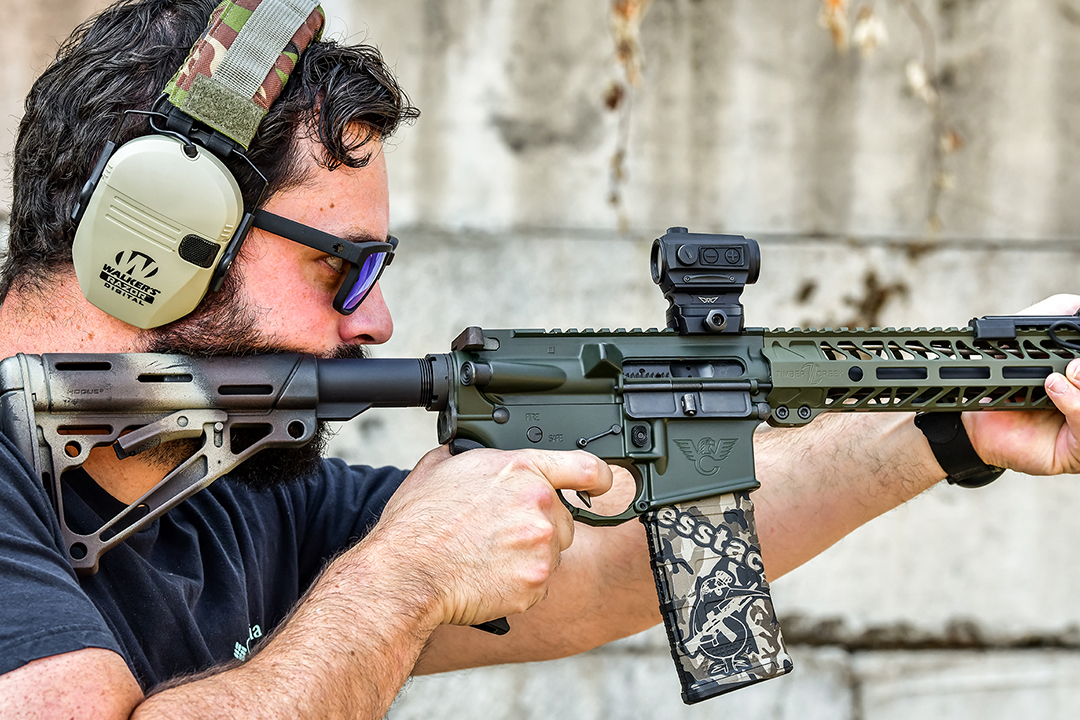
Why use a red dot reflex sight?
Most red dots, except prism dots, are truly one power. There is no eye relief or parallax, thus making aiming faster, so they are often called reflex sights. A shooter does not have to worry about parallax or fisheye because all they need to do is put the dot on target and fire. They are much smaller and lighter than magnified scopes. There are a lot of benefits to using a red dot; however, if you are aiming at smaller targets at longer ranges, you're out of luck because the dot can cover more than just the target, making pinpoint accuracy extremely difficult.
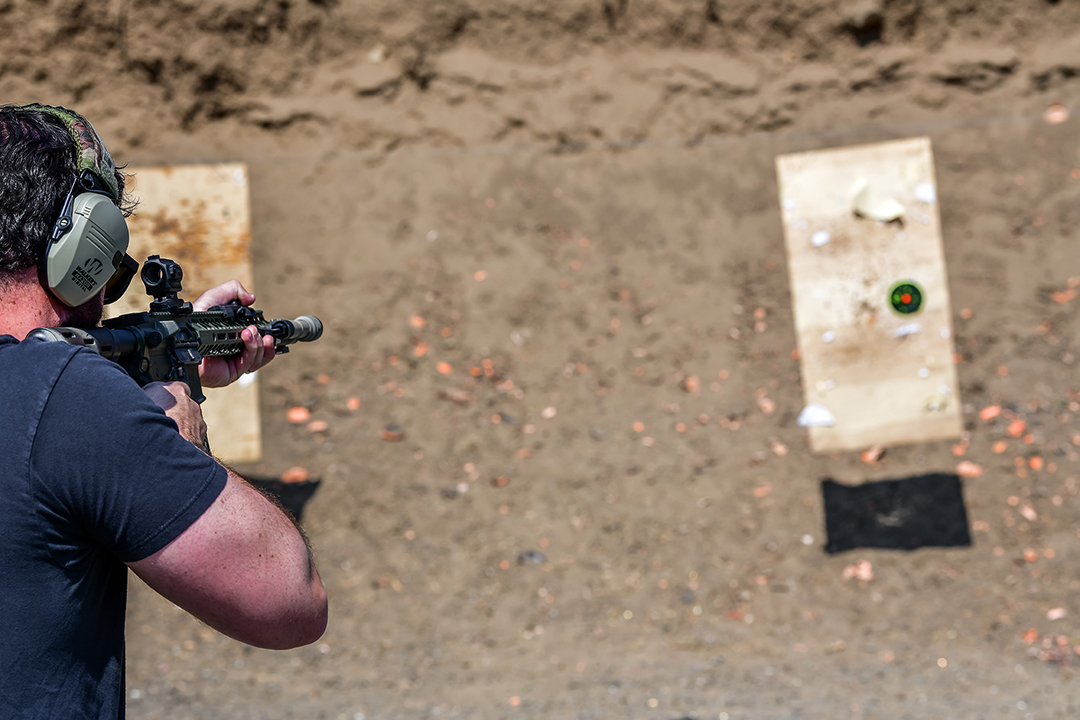
What if I want to use a red dot but need magnification?
Ever since red dots came out, there was that issue of what if I need magnification. Manufacturers addressed the issue with magnifiers using a flip-to-side feature to move it out of the way when shooting. Using a magnifier allows red dot users to engage targets far away; however, unless using a holographic laser dot, they also magnify the dot keeping them from being precision optics. They are bulky and sometimes get in the way if flipped to the side. This led to the demand for something that could work like a red dot but have magnification. Be sure to check out our selection of red dot risers to find the right height for your cheek weld and your magnifier.
If you happen to want to get into multi-gun or 3-gun competition you may find depending on the range that is hosting the event that some targets are as close as 10 feet to over 200 yards away. The longer-range targets can be challenging to some shooter with just a red dot. Some common set ups are rifles with LPVOs followed by dots with flip to side magnifiers follower by mid powered scopes like 2.5-10x 40 with a red dot mounted on a 45-degree mount like our 6110M, Red-dot riser, 45 degree offset reflex mount or our A645TG Picatinny Side Mount Adapter, 45-degree mount.
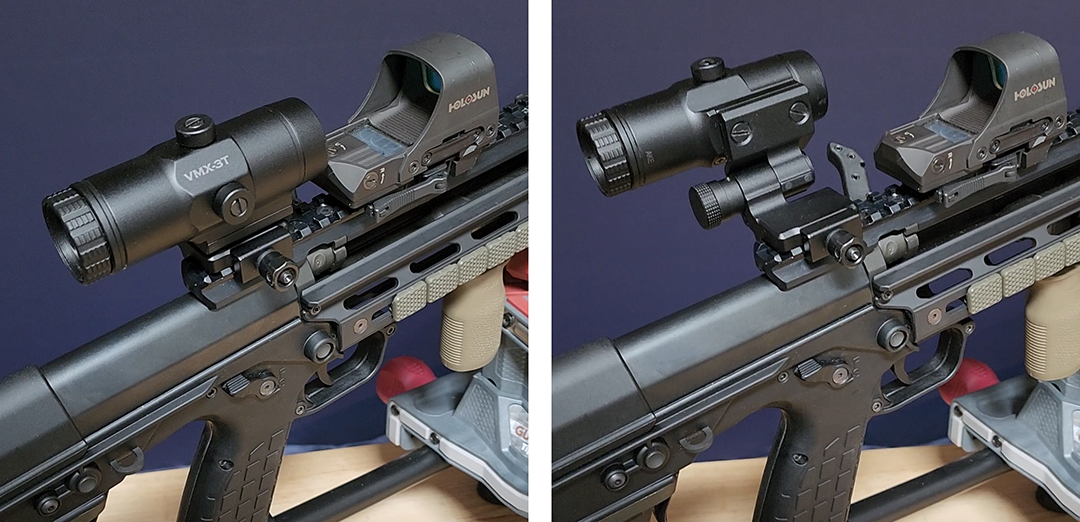
Along came the Lower Power Variable Optic (LPVO)
When the 1-4s hit the market, they quickly gained popularity with competition 3-gun shooters, which led to more powerful ones like the 1-6, then the 1-8, then the 1-10, and now at the time of the writing, the MPVO (mid power variable optic) 1-12. Using an extended throw lever a shooter can quickly go from a red dot like 1 power to extended higher power to engage smaller targets at longer distances.
LPVOs have quite a variety of reticles from a simple dot, crosshairs, to reticles with MIL and MOA elevation and windage marks. Many LPVOs come with resettable turrets for shooting at longer ranges. LPVOs come with a lot of benefits over red dots but they also tend to cost a lot more than red dots.
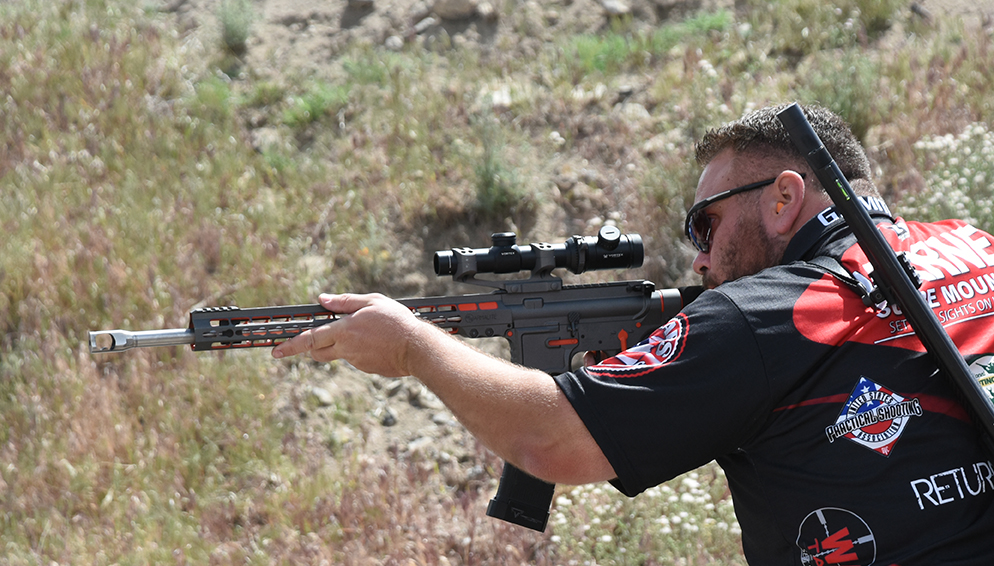
Do LPVOs function like red dot reflex sights?
The LPVO at one power is not a true one power. It is very close, like a 1.1. so, we can call them 1x. They act like a Red Dot reflex sight, but they do have some parallax and eye relief, so a shooter must ensure their LPVO is set up with the proper cheek weld and eye relief. If done correctly, the shooter can be on target just as fast as a shooter with a red dot. One thing to note for red dots and LPVO is that quality matters, and there is often a good reason for the price points.
Although the LPVO may fall short of being a true 1X, it can function like a red dot when set up correctly at 1X hitting targets at short range and quickly dialing up for long-range targets.
Other considerations are. LPVOs are a lot heavier than most red dot sights, and top-quality ones tend to cost much more than top-quality red dot sights.
Is a Red Dot more durable than an LPVO.
Quality Red Dot are more durable simply by design. They don't have as many features they have less glass and weight. There are fewer breakable parts should your rifle be dropped off a 2-story building or ran over by a truck (who does that?). However, LPVOs can still be used even with electronic failure.
It is rare for red dots to have electronic failure, but it can and does happen so if you are going to match be sure to bring a spare battery and perhaps even a backup sight.
Red dot risers for Reflex Sights
Warne also makes red dot risers. Our current red dot risers are all absolute and lower 1/3 co-witness adjustable with the included spacer. We have an option of the Aimpoint T1 interface, Picatinny, and then the universal reflex plate that fits many different optics. The ones that will launch soon are for the Holosun AEMS in true co-witness, lower 1/3, and a super high option around 2.25" to the center. We will have a super high also for the Aimpoint T1 style and a standard height for the Aimpoint Acro.
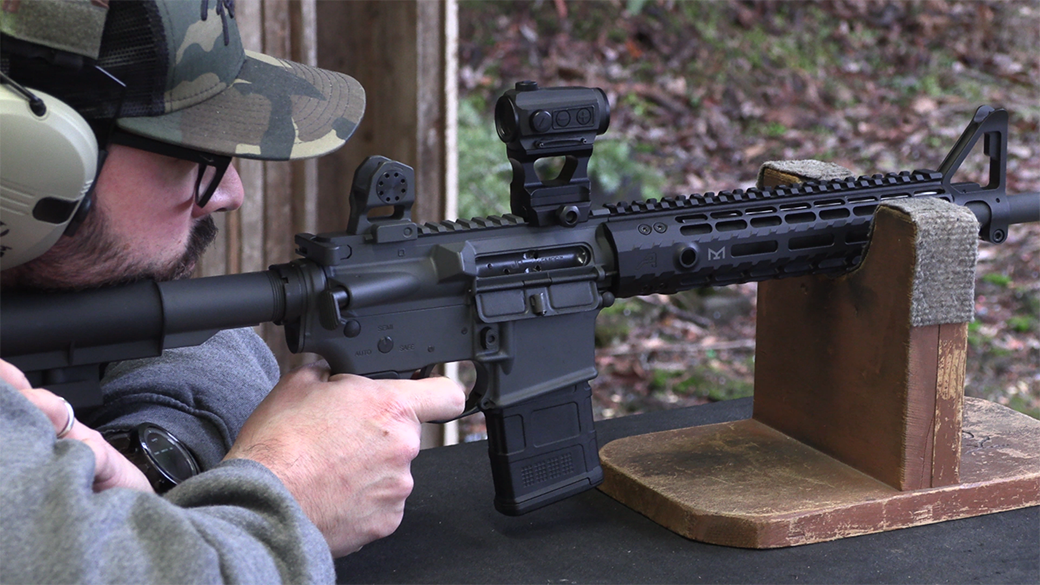
The main benefit of our design is that it is height adjustable and that our reflex plate fits so many models you don't have to buy a bunch of different mounts.
Using an LPVO with a red dot reflex sight.
Many pro and tactical shooters will use an LPVO or other magnified scope with a red dot. Using a Warne A645 45-degree mount and Warne XSKEL allows shooters to use a variable scope on top and, by quickly tilting the rifle, use a reflex red dot for close shots. This combination gives a shooter an advantage to engage targets of different sizes and ranges quickly, each working as a backup sight for the other should one get damaged. Our A645 allows the backup sight to be instantly used with a slight tilt of the rifle.
This is one of my favorites set ups even though it does take some practice and getting used to. This set up besides being really fast gives the shooter a useable back up sight. There was a time when most shooters would put a flip up back up iron sight under their scope that rarely if ever got used. It was there just in case the scope was damaged. Having a red dot on a 45-degree mount allows for the backup sight to become a secondary sight and actually be used and in the case of one sight going down in the middle of a match stage the competitor can quickly shift to the working sight.
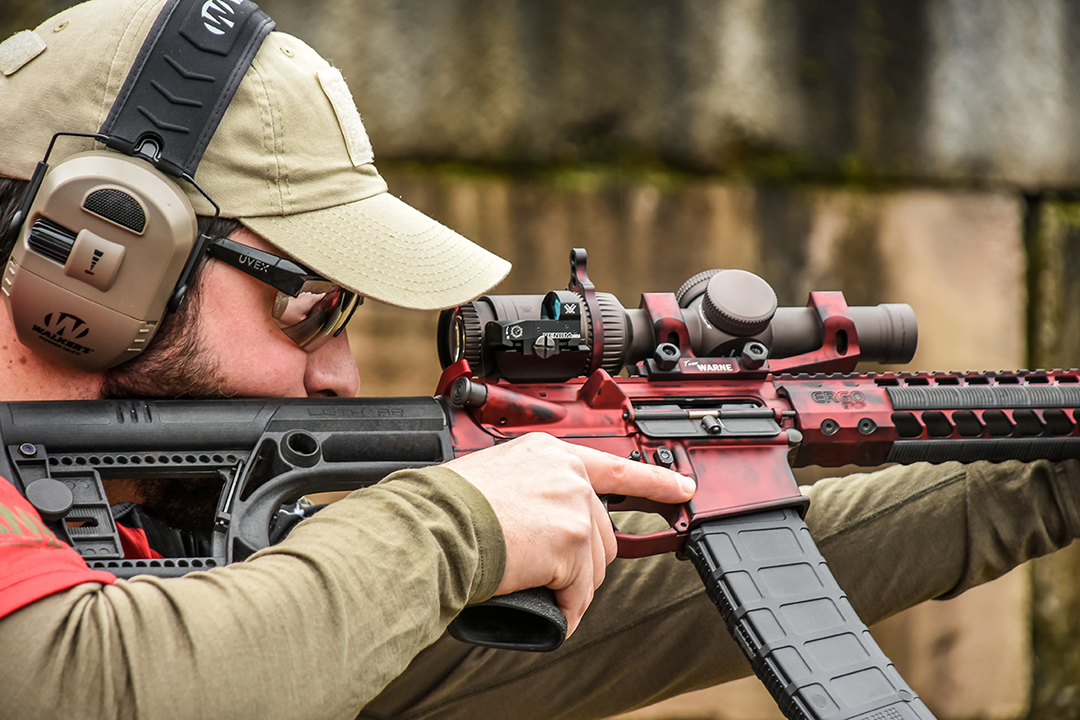
Using this combination of a red dot sight and a magnified sight questions the need for an LPVO as a shooter could get a standard magnified scope like a 2-10X to go from 2 to 1X quickly and dial up higher if needed. The key is finding what is best for you based on whether your rifle is for single or multi-purpose.


